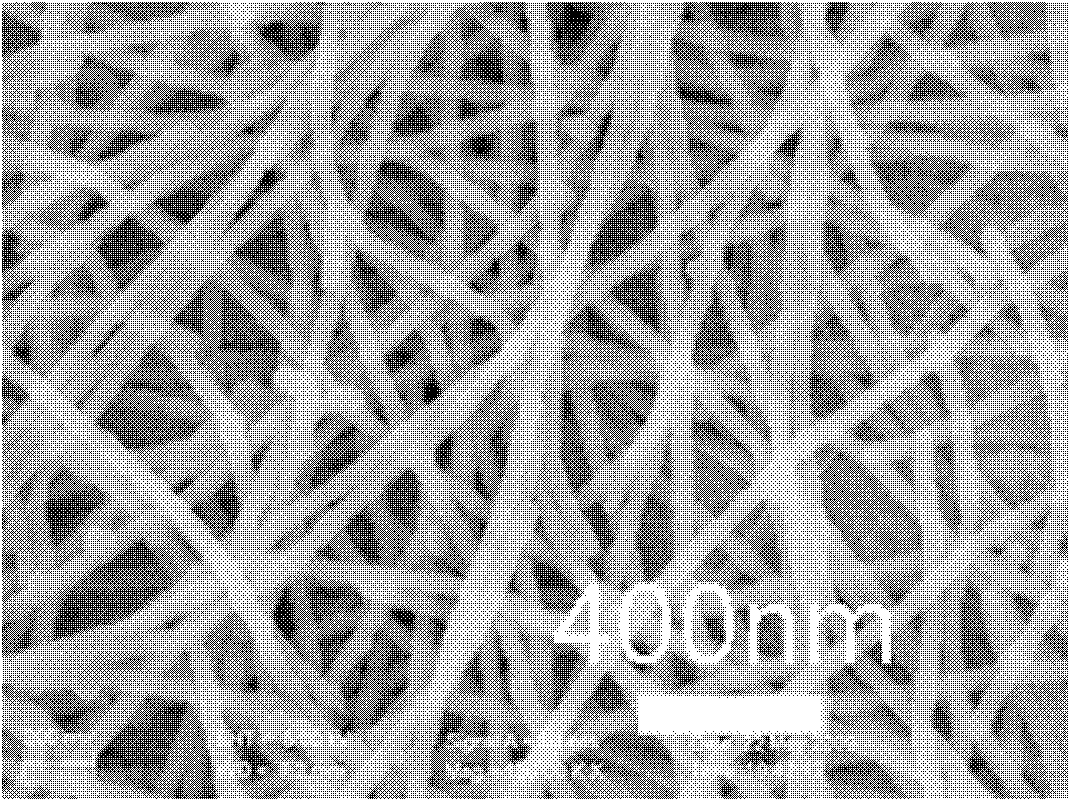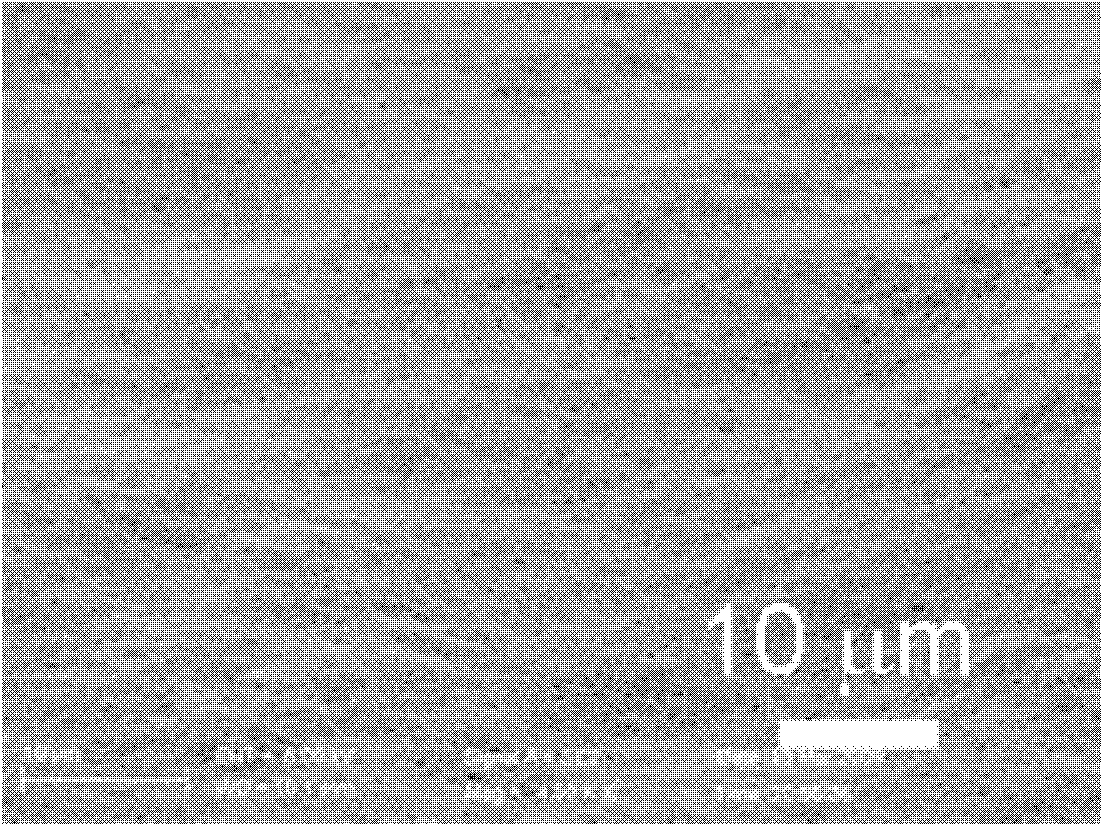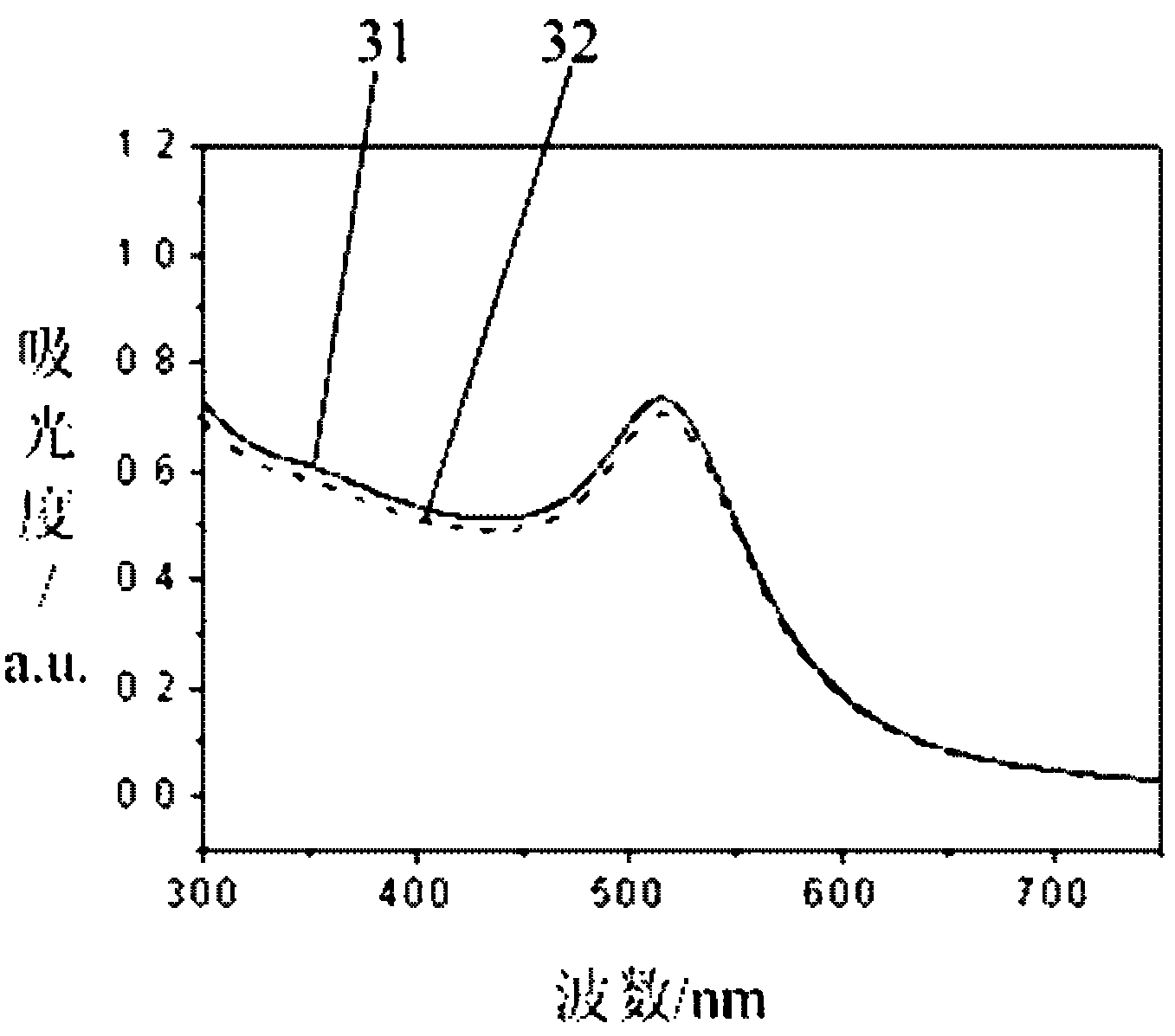Method for preparing carbon nanofiber membrane
A carbon nanofiber and tellurium nanotechnology applied in the field of nanomaterials to achieve good flexibility, uniform diameter, and controllable pore size
- Summary
- Abstract
- Description
- Claims
- Application Information
AI Technical Summary
Problems solved by technology
Method used
Image
Examples
preparation example Construction
[0031] The invention provides a kind of preparation method of carbon nanofiber membrane, comprises the following steps:
[0032] a) mixing tellurium nanowires and glucose in an aqueous solution, and performing a carbonization reaction to obtain carbon-coated tellurium nanocables;
[0033] b) adding hydrochloric acid and hydrogen peroxide to the carbon-coated tellurium nano-cable, and performing an oxidation reaction to obtain carbon nanofibers;
[0034] c) dispersing the carbon nanofibers in a solvent to obtain a slurry, applying the slurry on a support material, and drying to obtain a carbon nanofiber film.
[0035] The present invention uses tellurium nanowires as a template and glucose as a raw material to obtain carbon-coated tellurium nano-cables; then hydrogen peroxide is used as an oxidant to remove the tellurium core in carbon-coated tellurium nano-cables in the presence of hydrochloric acid to obtain carbon nano-cables. fibers; and then carbon nanofibers are formed i...
Embodiment 1
[0051] 1g polyvinylpyrrolidone and 92mg Na 2 TeO 3 Add it into 32mL of water, stir evenly, then add 1.67mL of hydrazine hydrate and 3.33mL of ammonia water, stir until the phases are evenly separated, then place in a sealed container, raise the temperature to 180°C and react for 3 hours to obtain Te nanowires, adjust the concentration of Te nanowires , to obtain 0.18g / L Te nanowire aqueous solution;
[0052] Mix 100mL of the Te nanowire aqueous solution with 100mL of 67g / L glucose aqueous solution, stir evenly, place in an airtight container, and carry out hydrothermal carbonization reaction at 160°C. After reacting for 18h, cool to room temperature to obtain C-coated Te nanowires. Cable, adjust the concentration of the Te nano-cable covered by the C, obtain the Te nano-cable aqueous solution of 5g / L;
[0053] Add 100 mL of 0.5 mol / L hydrochloric acid and 100 mL of 0.5 mol / L hydrogen peroxide to 100 mL of Te nanocable aqueous solution, stir and react, centrifuge, wash and dr...
Embodiment 2
[0063] 1g polyvinylpyrrolidone and 92mg Na 2 TeO 3 Add it into 32mL of water, stir evenly, then add 1.67mL of hydrazine hydrate and 3.33mL of ammonia water, stir until the phases are evenly separated, then place in a sealed container, raise the temperature to 180°C and react for 3 hours to obtain Te nanowires, adjust the concentration of Te nanowires , to obtain 0.18g / L Te nanowire aqueous solution;
[0064] Mix 100mL of the Te nanowire aqueous solution with 100mL of 67g / L glucose aqueous solution, stir evenly, place in a closed container, and carry out hydrothermal carbonization reaction at 160°C. After reacting for 24h, cool to room temperature to obtain C-coated Te nanowires. Cable, adjust the Te nano-cable of described C coating, obtain the Te nano-cable aqueous solution of 5g / L;
[0065] Add 100 mL of 0.5 mol / L hydrochloric acid and 100 mL of 0.5 mol / L hydrogen peroxide to 100 mL of Te nanocable aqueous solution, stir and react, centrifuge, wash and dry the reaction mix...
PUM
| Property | Measurement | Unit |
|---|---|---|
| diameter | aaaaa | aaaaa |
| size | aaaaa | aaaaa |
| size | aaaaa | aaaaa |
Abstract
Description
Claims
Application Information
 Login to View More
Login to View More - R&D
- Intellectual Property
- Life Sciences
- Materials
- Tech Scout
- Unparalleled Data Quality
- Higher Quality Content
- 60% Fewer Hallucinations
Browse by: Latest US Patents, China's latest patents, Technical Efficacy Thesaurus, Application Domain, Technology Topic, Popular Technical Reports.
© 2025 PatSnap. All rights reserved.Legal|Privacy policy|Modern Slavery Act Transparency Statement|Sitemap|About US| Contact US: help@patsnap.com



